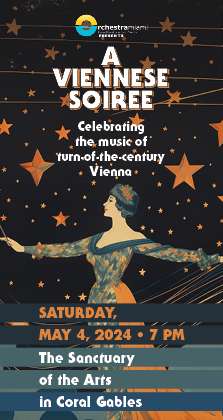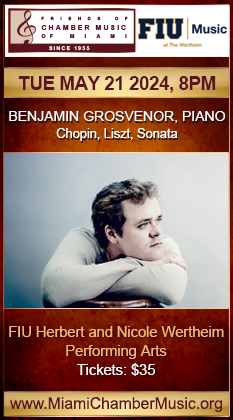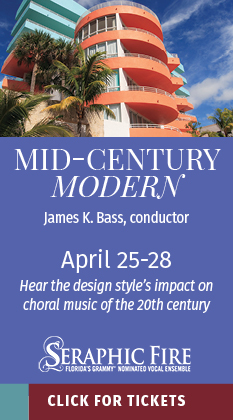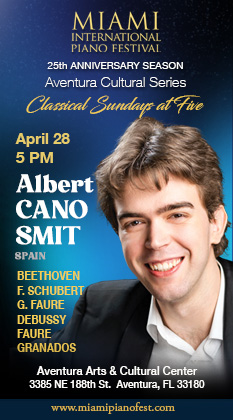Ax, MTT and New World make collegial team in Brahms program
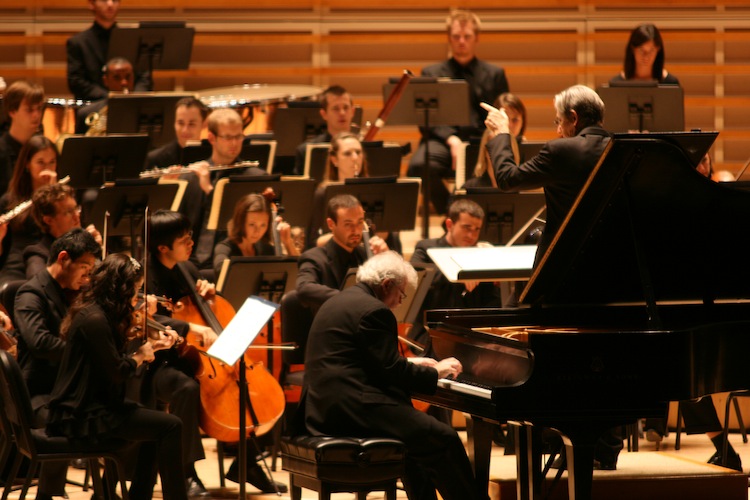
Emanuel Ax performed Brahms' Piano Concerto No. 2 with Michael Tilson Thomas and the New World Symphony Saturday night at the Arsht Center. Photo: Craig Hall/New World Symphony
Johannes Brahms may not be, as the New World Symphony’s webpage describes him, the “ultimate Romantic,” a title that could be more convincingly bestowed on Berlioz, Schumann, or Liszt. But although his reputation is that of a sober, Germanic, history-conscious artist, a streak of Hungarian fire runs through his music, and this quality was prominent in the Brahms program heard Saturday at the Arsht Center in Miami.
The pianist Emanuel Ax joined the orchestra and music director Michael Tilson Thomas for Brahms’ Piano Concerto No. 2, a work given its premiere in Budapest and containing a gypsy-tinged last movement. Ax is an engaging stage presence, with a collegial manner that was fitting for this most symphonic of piano concertos, turning to watch the orchestra during the tuttis, moving his head in time to the music, looking to Tilson Thomas and integrating his playing into that of the orchestra.
Technically, his playing was not note-perfect, and he opened uncertainly, with a percussive account of the gently rhapsodic arpeggios with which the piano enters. But he seemed to warm up quickly, and was at his best in the craggy, rhythmic passages in which the piano’s percussiveness cuts through the orchestra. After a bobbled horn note in the opening bars, the orchestra under Tilson Thomas sounded magnificent, playing with urgency, intensity and broad sweep in the soaring, characteristically Brahmsian passages found throughout the concerto.
In the Andante, cellist Joseph Lee gave a honey-toned account of the cello solo that opens the movement, playing not only with tonal beauty but with a sense of the long melodic line. Ax and the orchestra created an atmosphere of hushed tension, achieving an almost improvisatory tone in which the music seemed freed from the beat without losing shape. After the conclusion of the concerto, as the audience applauded, Ax graciously walked over to the cellist and led him to the front to share bows with himself and Tilson Thomas.
The concert opened with Brahms’ Hungarian Dances Nos. 1 and 10. Before the performance, Tilson Thomas came on stage and announced — over an amplified system that made his words barely audible — that he would allow the young conductor Alexander Prior to lead these works. Although only 18, Prior already holds a master’s degree from Russian’s St. Petersburg Conservatory, has served as assistant conductor of the Seattle Symphony Orchestra and was conducting fellow at the Tanglewood Music Centre.
Prior led energetic accounts, aggressively intervening to mark tempo shifts, and giving a nice, uncivilized edge to the performance. The orchestra played well, apart form the strings became a bit indistinct in fast passages, playing without their usual articulated precision.
Arnold Schoenberg’s orchestration of Brahms’ Piano Quartet No. 1 is a tribute to a composer greatly — and to some incongruously — admired by the revolutionary founder of the 12-tone compositional system. Schoenberg orchestrated the work in a Brahmsian manner, one that respects the composer’s style, except for some weird percussion touches in the last movement.
Although Schoenberg’s orchestration has been described as Brahms’ “Fifth Symphony,” Tilson Thomas gave a restrained account in which the work achieved a dark grandeur while maintaining a chamber-music sense of proportion that avoided blasting people out of their seats. Much of the credit goes to the crack brass section that ripped through rapid passages never designed to be played on their instruments, while remaining integrated within the orchestra rather than sounding like bumptious party crashers. Strings were outstanding throughout, with a dark, weighted tone, particularly in the contrapuntal melodies of the first movement and the second theme of the last.
The last movement, a clanking presto in the gypsy manner, didn’t come off with the frenzied, accelerating excitement of the best performances, possibly because it lacked the bite the piano gives the chamber version.
In the pause after the second movement, a woman got up and walked toward the lobby, her high heels making such a racket that Tilson Thomas — a veteran of coughing fits and cell phone interruptions — turned around in irritation and waited until the noise stopped before striking up the third movement.
The program will be repeated 2 p.m. Sunday at the Arsht Center’s Knight Concert Hall. nws.edu; 305-673-3331
Posted in Performances
Leave a Comment
Sun Oct 31, 2010
at 1:24 pm
No Comments

